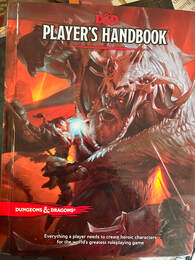 The problem with Dungeons and Dragons, as much as people love it, is that it is totally "The Man." TSR, the original publisher was dysfunctional...but the Man. Wizards of the Coast (WoTC)--maker of the Magic the Gathering card game and purchaser of TSR's corpse--is also the Man. Hasbro, who bought WoTC pretty obviously is the Man as well. Yes, they all like games, but the culture of these institutions have been geared toward squeezing the last dollar out of consumers for a long, long time. Now there is unrest among the tabletop gamers. Hasbro/WoTC is testing out a new license for third party producers who use what they feel is Hasbro/WoTC's own intellectual property. Set aside for a minute that this gaming giant picked through other companies' work for many of the tropes they use. Also ignore for a moment that much of what they claim as theirs is derived from myth, legend, and fantasy novels written by people who may have never heard of D&D. Even, for a moment, pretend not to know that WoTC/Hasbro actively encouraged people to write for their game by promising specifically not to do what they are now trying to do; namely monetizing these 3rd party creators' ideas and labor as if it was their own. All of that aside, it still seems strange that anybody could claim to have originated rolling dice and adding numbers, doesn't it? Now, the Man is in temporary retreat, claiming to be misunderstood. They weren't misunderstood. They were just surprised by the pushback. It is in their DNA to take the rest of the gaming community for granted. For further research into this somewhat tedious but very important subject, you can check out any number of stories about the Open Gaming License. Even the mainstream press has noticed. I will cease to belabor the issue here, except to say that there are other fish in the gaming sea. One thing that the Man has done is accidentally energize all those folks who they hoped would fall into line. We are, I think, about to enter a renaissance of gaming opportunities. Don't worry about the Man, by the way. they will be fine. D&D is neither the first nor the best game of its kind. In fact, the current version of the game--called "5th Edition" although there have been many more editions than 5--is not the game that they started with. Yes, Virginia, those kids on Stranger Things are playing a very different game. More on that later. Why will WoTC be fine? Their brand name is ubiquitous, so people just entering the hobby won't even know there are other options. I run games in "D&D 5e" because I work with new players and saying "it is like D&D but it is not D&D" is a non-starter for many. If someone decides they want to drink cola for the first time they ask for a Coke. You can tell them that Polar Cola is better but they will not believe you until after their Coke experience. That is D&D. It is Coke. History, culture, and a good ol' dollop of corporate gaslighting have convinced us that Coke and D&D are the best. Of course, the truth is a ton more complicated. Anyway, the church campaign may be the last one I play using a Hasbro product. I play a great many roleplaying games (RPG's) right now and none of the others are D&D. Interestingly I refer to the groups I play with as "D&D groups" because then people know what I am talking about...but we are playing Polar Soda--metaphorically--and loving it. So if you are a tabletop gamer, or interested in becoming one and want to fight the Man, here are five games that are better than D&D. 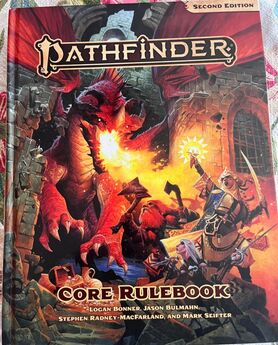 This is built on many of the same core mechanics and by many of the same people as D&D. This is built on many of the same core mechanics and by many of the same people as D&D. Pathfinder Second Edition: This is the true Polar Soda of the gaming world. It is made by Paizo, an independently-owned company that split off the last time WoTC/Hasbro betrayed the public trust in what nerds call "The Edition Wars." The wars--in some sense--are still ongoing...and complicated. Basically, Pathfinder First Edition was very similar to D&D 3.5 Edition. Confused yet? The developers at Paizo had a major hand in developing that system. When WoTC went to D&D 4e, Paizo decided to continue with the previous game. The fallout from that split is part of the reason there is an OGL in the first place. You see, Pathfinder 2e is really as much the inheritor of D&D as D&D 5e. This is a basic truth in the gaming world. It is the elephant in the room over at Hasbro. I should note that when I returned to gaming about twenty years ago I first told myself it was for the kids. Then I settled on D&D 3.5/Pathfinder 1 as my re-entry point. I was one of those people who migrated to Paizo then. The system was super complicated...but there are at least some good memories! Having grown directly out of the split, Pathfinder 2e is built on a very similar platform as D&D. They are cousins, essentially. If you are looking for a good next game. I cannot recommend this enough. Their material is top-notch. Their service of consumers and third-party developers is excellent. In fact, you can get all the rules for free online! Also, they are quite progressive, constantly adjusting their material to make it more welcoming to a diverse fan base. They basically are what WoTC/Hasbro pretends to be. I have played a lot of Pathfinder 2e. I have been in a group that meets online and plays at least twice a month. For a while, when we couldn't leave our houses, it was weekly! We started right before the plague. This is not my "native" system--more on that later--but it is one of my favorites. Like D&D it has many rules for combat and fewer for other areas of the game...but not as few as D&D. If you want to have a game with slightly more numerical meat to it that plays like what you are used to, this is the one. Here is the link to Paizo, where you can see the many different games they offer. Also their two biggest games--Pathfinder and Starfinder--are sometimes the only non-D&D content to be found at general bookstores. GUMSHOE (The Yellow King, Ashen Stars, Swords of the Serpentine, etc): OK, this might actually be my favorite system. The gaming world can be broken into groups that use similar "mechanics." This term includes things like what dice one uses and how bonuses are added to those dice. D&D and Pathfinder both use a "D20" system. Which is to say that the core rolls are on a 20-sided die to which bonuses are added and penalties subtracted to give a number that either hits or misses a target number (Armor Class if you are trying to hit a person, or Difficulty Class of you are trying to do a thing, for example). If you get over the target number you succeed in hitting the villain, or picking the lock, or whatever. If you get under...you don't succeed. The Gumshoe system operates on a single D6, instead. Also, instead of having the many complicated stats and skills that are the hallmark of D20 systems, you have a number of pools of "points" to add to the d6 roll. Those points deplete over time as your character gets tired and weak. It adds some suspense. Also in this system the story takes precedence over the rolls, so combat is less granular. In Yellow King, for example, it is resolved in a matter of seconds in a single round of rolls. Then you tell the story of what happened... I have played two different versions of this game and am itching to try one more. Yellow King is a horror game where people die or go mad regularly. I have played this in an online group that started around the time my Pathfinder group did. We are...theatrical. Ashen Stars is in outer space. I am playing that now in a regular in-person group. Both of them--even though Ashen Stars can be plenty complicated--leave breathing room for the tale. Yellow King--which has very few rolls--also allows for plenty of improv, which isn't everyone's cup of tea. However...it certainly is mine. The final entry in Gumshoe for now is "Swords of the Serpentine." I posted a picture farther up. It is a fantasy setting and looks rather complicated but at some point I will either run a game or badger someone to run it for me. These and other games are published by Pelgrane Press. Check them out! Vampire the Masquerade: Look! Another horror game! This game uses a "dice pool" system. Essentially, as you get stronger in a particular skill, you get to roll more dice. This is different from the other games systems I mentioned. In both d20 games and gumshoe games you roll one die and add bonuses which increase as your character improves. In dice pool games...you get more dice. Otherwise they are the same. The player is trying to hit a target number for success. The system is also simpler than D&D or Pathfinder, which leaves room for roleplaying. Also rolling a handful of dice is very satisfying. My one big complaint about Masquerade is just that it is creepy. In fact, it could be triggering for some people. I will go one more step to say that I do not recommend this game for everyone. It is worth noting that the makers of the game are aware of its creepiness and have a warning page at the beginning. This is not for kids. Vampires are nasty, evil, and highly sexualized in pretty dark ways. When I played this we made sure to keep it campy. I was a lunch lady. It is important to know who you are playing with, to make your boundaries clear, and to respect the boundaries of others. This is true in any game, but in this one it is doubly important. That said, in spite of my reservations...I did end up enjoying myself. Here is a link to World of Darkness, who publishes this game. 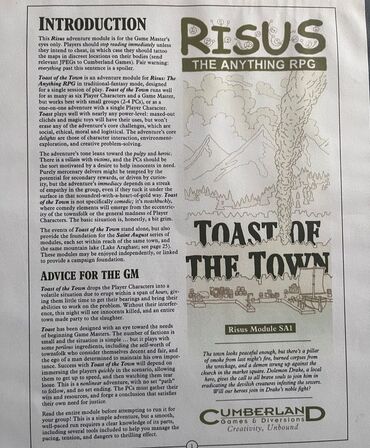 While the system is free, I have purchased some material in PDF and put them in binder because of its excellence. While the system is free, I have purchased some material in PDF and put them in binder because of its excellence. RISUS: OK, this is a d6 "dice pool" system that is free and has two pages of rules. I love it! I have run a couple of campaigns in this system, modifying rules as we go. Set up is fast--or can be--and is best when the players are willing to be goofy. The character development process involves selecting a "type" from literature, film, or whatever and then running with it. You have to convince the person running the game that your--for example--"Failed Han Solo 4" should be able to roll all four of his dice to swing across a river, charm a local constable or--less likely--defuse a bomb. Many people think this makes a good starter game. It has very few rules, right? I do not think it does. It is great for people who want to stretch the rules to their breaking point, improv, and roleplay. That, however, takes a certain amount of experience with the genre. Most beginners are trying to learn not just what is written down but the unwritten skills to bring life to their character and the world. Also, not everyone likes improv or understands the same tropes of popular culture. In my experience of teaching these games, true beginners are very focused on a strict reading of the rules. It takes a while to let them breathe. What it is good for, though, is a group who isn't taking things too seriously, knows how to play an RPG in general, and can keep focused long enough to "yes and" (that is...improv) well. This thing can go way off the tracks and people checking out for long periods of time is more detrimental than it is in other systems with, you know...structure. I will play this again some day. However, I will be careful about who I invite to the table. Welcome to the Risusverse! 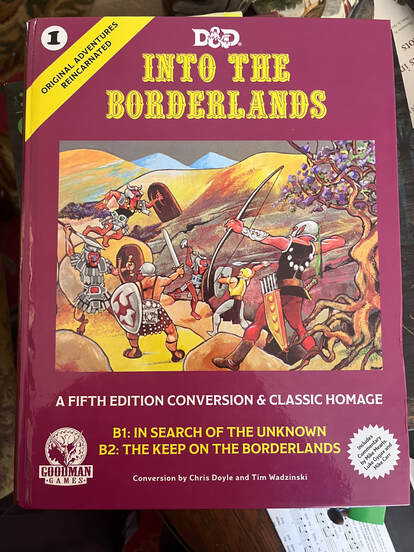 This Goodman Games product has two original modules from Basic D&D and a 5e conversion. They had a deal with WoTC but...apparently WoTC wants more... This Goodman Games product has two original modules from Basic D&D and a 5e conversion. They had a deal with WoTC but...apparently WoTC wants more... Finally "Original D&D": I use this term advisedly and really to shock my fellow nerds. There are plenty of people who see those words and prepare to fight! However, what I mean here is the cloud of games that have been developed under the banner of "Old School Renaissance (or Revival)." OSR games are designed to replicate many of the earliest roleplaying games. Honestly I haven't played many of the new OSR adaptations, but this is because I have my original Basic rules (above). These are the systems from the 1980's that I grew up with. They are unwieldy, complicated, and sometimes hard to learn. I started gaming around the age of 11. At first, of course, it was mostly just reading the rules and wishing my friends weren't trying so hard to be cool. Gaming was not cool. Parents saw it as being a gateway to drugs, cults, and satanism. At the very least, to be even interested in playing made you a weirdo. It was hard to get a game together and eventually--in high school--I gave up trying for a long time. I was still considered a weirdo, though. I probably should have kept on keeping on. The first books I bought were for what was just then beginning to be called "Basic/Expert D&D." Shortly before I began playing it was just called Dungeons and Dragons but a new version of the game came out called "Advanced D&D." Advanced D&D was similar to Basic but was ostensibly written by one person...Gary Gygax. "AD&D" is what WoTC now calls "First Edition." Why is Basic not "first" even though it is older and all the other d20 games are built upon it? Well Padwan, it is because Gygax didn't want to share profits with his colleagues. Sound familiar? It should. Also, it is unclear who owns this game today. It is that old and was abandoned by the poorly run TSR. This makes it hard to monetize if you are WoTC. Anyway, in a sense when I play a d20 game I am still playing Basic/Expert D&D. All those other books published by various editions and third-party folks? They are supplements to this game in my head, starting with AD&D. Looking back I realized that we just fused on parts we liked to our existing rules, but were never "first edition" players. It was way too complex! It probably annoys people I play with when I resurrect some random rule, or just make one up. Making up rules was a regular occurrence in the old game because the books were so poorly laid out it was easier just to wing it. This is probably why I like RISUS! When I run a game--in any system--I still do this. When someone else is running the game and I am playing, though, I do try--sometimes successfully--to make sure I have a reasonable grasp of what the system demands. Making up rules on the fly is definitely not everyone's way to game. Still...on the inside...I am probably playing something else. The game played very differently back in the 1980's. Modern games have long story arcs and heroes who are hard to kill so that those arcs can be maintained. Characters die fast and frequently in old D&D. The humor is broad. Survival is optional. You try not to get too invested in the backstory of who you are playing. Your characters are like you. They are way outclassed. That said, we loved exploring imagined worlds, gaining gold, and sometimes becoming heroes. We also brought backups. Sometimes when our character died we would erase the name at the top and then, in the next room, the party would find that character's identical twin sister. We drank Polar Soda, or Moxie, or Coke and always had chips and pretzels. We had no idea what we were doing. We were full GenX. Sometimes it was D&D. Sometimes it was something similarly deadly but much more complicated (d100 systems anyone?). The vibe was the same. Each table was basically playing a game of its own making developed through days of micro-negotiation. This, my friends, is what those Stranger Things kids were playing. There are a ton of options here, but I will start by suggesting Dungeon Crawl Classics by Goodman Games. I have used some of their material for my Basic/Expert explorations and other gamers I know like them. One thing to look out for is that some conservative folks gravitate to these older games because they don't particularly like the inclusiveness of newer games. This has given this genre a bad reputation in some quarters. It should be noted that "new OSRs" are frequently just as inclusive as newer games. It is just good to be forewarned when delving in to this area, particularly if you are hanging out on the socials. Also, nepotism is a thing so here is my son's old school weblog...or it will be here once he gets back to me. 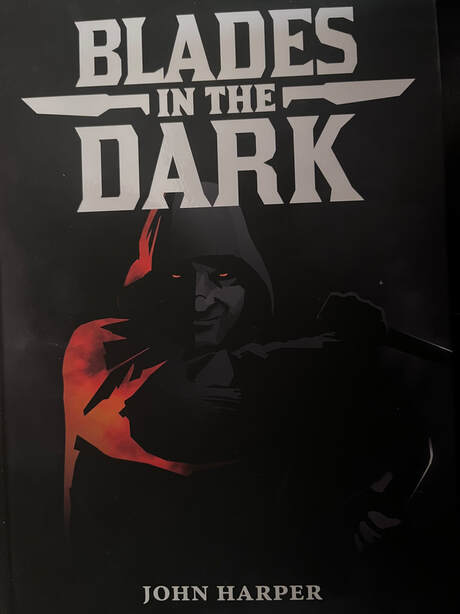 If there were six games on my list...this would be number 6 If there were six games on my list...this would be number 6 Anyway, there are so many more games I could mention. Some are dead. Others I just wish I had time for. There is a world of roleplaying games out there. There are also "story games." There are also board games that feel like roleplaying games, too. Although those mean buying from Hasbro. Tabletop RPG's have been an important part of the lives of many people. They have been a way to imagine another world. Sometimes that world is dark and sometimes it isn't. Whatever or wherever it is, we can try on different identities and different lives, which is just what we need sometimes. My social algorithms are full of consultants talking very seriously about how "play" can increase productivity. It probably does...I guess. What I know is that no one needs an uptight suit to tell them that these games can increase your creativity and, therefore, your happiness. So get out there and roll some dice! Good luck finding something. I am here to help.
0 Comments
I am having a bit of a crisis with one of my plants. It is a large ginger that sits near the television and is truly quite a looker. This fall I added some houseplants as a way to get some green living things in my life before the snow and the cold made everything bleak. I got them free from a landscaper friend and the others are all in various levels of health. The ferns seem happy. The bamboo...I don't even know how to read but I think it needs water. My two old plants--an ancient Ficus older than my marriage and a Spider Plant--look like the grizzled survivors they are. It is this ginger plant that is bothering me right now though. A few days ago yellow leaves started to appear. I did some reading and I learned that it could be too much water...or not enough water...or too much sun...or not enough sun...or an incurable disease. Good times. After a few days of stress I bit the bullet and watered off schedule. The other plants--except maybe that bamboo--don't seem to need much as long as it is regular. Now I wait to see if I drowned it. I think it is time for a garden roundup. The year has ended and so has the growing season. Maybe it is time to take a look at how things went and consider the future. 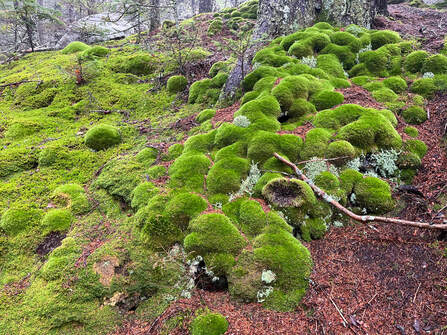 Moss, lichen, and trees making a heroic stand in the shallow soil of Black Mountain (Benton). Moss, lichen, and trees making a heroic stand in the shallow soil of Black Mountain (Benton). This year was a bit of a baseline project. I have pretty much always had a garden in the same way I have always hiked. I do it...but not well. Of course there are differences. Hiking is something with a simple skill set. The living thing you take care of is yourself. The basics--putting one foot in front of the other--are obvious. On a hike you are testing yourself, your physical ability, mental fortitude and skill. Gardening is all of that with added levels of complexity as the ecology of our surroundings have their own ideas. This is the story of the ginger plant. They aren't built to live near a TV in New England. For all intents and purposes the plant--all the houseplants, in fact, and in some sense the outdoors plants as well--is in the same situation as the ones in those tiny alpine ecosystems clinging to the cracks in a rocky ledge. All of them are desperately trying to make a home in a place with limited resources. The alpine plants are actually better situated. They have adapted to live in those environments. The ginger, the ferns, ficus and so on are dependent on the relative competence of a middle-aged practical theologian with no real sense of what they need. So we have to ask ourselves, as people who care for plants, a number of questions. Broadly speaking, How do we make a curated space for growing things? What sort of dialogue between grower, subject plants, neighbor plants, neighbor people, and the local ecosystem--living room, lawn, or garden--can be arranged so as to be fruitful for the season? There are real stakes in this conversation. They are about survival for the vegetation. For me, the stakes are also relatively high. When I was recovering from COVID this past spring my biggest joy was sitting by the garden with my coffee. The same could be said for the time of my back injury. The conversations between these elements is important for all our wellbeing. 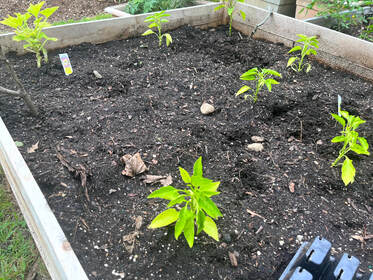 Cubanelles and a yellow squash. The peppers ruled the garden. The squash did not. Cubanelles and a yellow squash. The peppers ruled the garden. The squash did not. So...this past year it felt like I planted a ton of stuff. The plot is small. However we did add another raised bed to the operation. That may be it for now. One thing I learned was that the whole mess of beds and pots is awkwardly situated for the goal of maximized yield. The elbow of the house gets spotty light, which is good for some things but not others. Also, it has been churned up a couple of times to get to various infrastructure items that we unwittingly planted over. Finally, it is in a tight spot on the narrow driveway. The cars are single file so sometimes one's bumper makes contact with the outermost raised bed while backing over the lawn with the front car in line. Still, I don't think I will move it. It just will be the size it is for the time being. The original site selection was simply because most of the parsonage is exposed to the view of passersby. The garden corner is literally the only spot with any privacy, which makes it a nicer place to sit. Also, gardens are ugly--or can be deemed ugly--sometimes and I didn't need neighbors calling the church to complain. Yes...that is a thing. 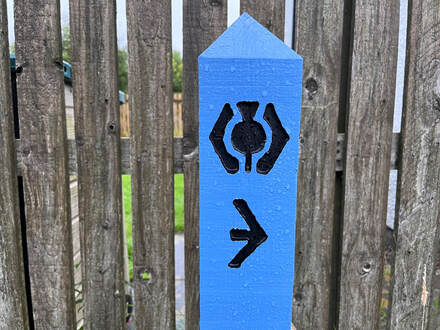 Not a globe thistle but an abstract thistle of some kind and the marker at the beginning of the Great Glen Way. Not a globe thistle but an abstract thistle of some kind and the marker at the beginning of the Great Glen Way. Anyway, I planted things and some did well. The potatoes were a successful early experiment. I planted reds, which were excellent and a variety of "Irish" potatoes that were healthy at first but ended scabby. I will probably plant reds in bags next year. Our pepper situation was ridiculous in a good way. Jedi and Padron--grown from seed--made room for Shishito, Purple Bells, Italian Cherries, and Cubanelles, some of which were planted in the potato bed after those were harvested. They all loved the heat of the Global Warming Summer and kept on giving until the cold set in. Herbs like basil, chives, thyme, Greek Oregano, lavender (new plant to replace a prolific old one) and rosemary (same) anchored the herb bed and made good meals better. Salad greens--mostly arugula--were harvested in their "baby" phase and used to spice up older greens from the farm my sons work at. The flowers--mostly in pots surrounding the beds--were much appreciated by me this year. My favorites were the Globe Thistle--a tribute to our Scotland trip--and the abundant dahlias. It was full 1950's for a while with massive blooms lending their color to the brown drought-stricken landscape. I have actually made an attempt to dry the tubers and use them next year. I fully expect failure but it would be fun...and none of the dahlia varieties I grew this year were rare. 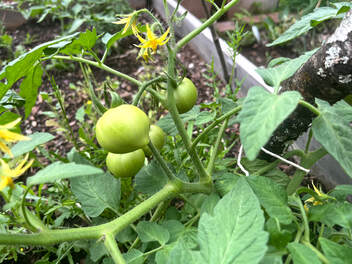 Tomatoes in happier times Tomatoes in happier times Let's not breeze by the failures. Yellow squash and cukes stood no real chance. We had watering issues and blight. They suffered from our trip to Scotland. The tomatoes were prolific...and immediately eaten on the vine by a rabbit and a chipmunk family before we ever got to use most of them. We lost ton of herbs and strawberries to them as well. We had pointless stevia plant. Finally, that rhubarb now 3 years old continues to not thrive. Alas! What can you do? 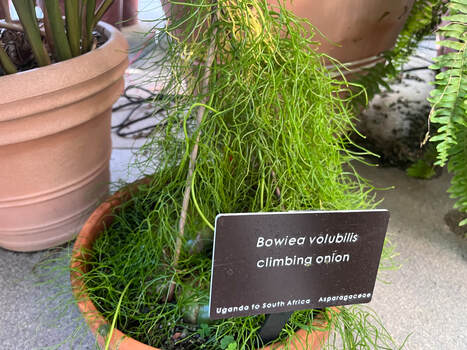 Frances Tophill suggests Climbing Onion as a plant to try. I found this one at Tower Hill. Frances Tophill suggests Climbing Onion as a plant to try. I found this one at Tower Hill. Well....you can plan for next year, right? After Christmas Day we took a field trip over to the greenhouses at the New England Botanic Gardens at Tower Hill. This was inspirational. I took lots of boring pictures of healthy houseplants and novelty vegetables. I am looking forward to going back there an learning more as time allows. Also, as I have mentioned earlier, I have been doing some reading. Celia Thaxter's book--that I mentioned in a previous post--is rarely shelved. My Christmas gift to myself also included some intriguing titles. I am almost through "The Philosophy of Gardening" edited by Blanka Stoltz and originally written in German. This collection of essays is deeply wonky and has given me a good sense of the state of the garden movement in Europe as well as some ideas for when I have more space. I have also cracked into two books by Frances Tophill. One has practical advice that I have already put to use in my quest to save my ginger plant. The other is about planning out a garden for the first time. Again, I don't have the space now, but maybe someday. There are a couple of others as well that I have consulted and will consult again. Now we are reaching 2023 futures planning. In addition to potatoes and peppers again, I hope to plant some weird things that I cannot get at the store or from the aforementioned farm my sons work at. The space I have does not lead to self-sufficiency really, just life-improvement. I am well into the planning stages and am considering seeds. Our neighbors next door--who are apparently fine with gardens--gave us some zucchini. I actually made a salad from them that I liked. Maybe, just maybe, one plant...
There will be flowers, too. Ever since the plague I have valued the aesthetic elements of the garden. It is a somewhat wild spot in the midst of the manicured lawns and the pavement that surround us. I have had a lot of coffee out there and written a ton of sermons. May it continue to be inspirational. We could all use an inspiring year. I got up early the other day and went back north to Maine to visit family. We hadn't been for a while and the personal landscape has changed a bit. Still, it was nice to be home. We only had so much time for a tour of various households. Some relations--like my mom--had moved since we were there last. Others were right where we left them. It was all good. So much in life can feel unstable these days. Everyone I know, it seems, is in transition. Seeing people who you have known forever reminds you that while the trappings are altered somewhat, you still have a place, even if it is more relational than physical these days. I may not have spent a huge amount of time in some of these spaces...but my people are there. This relational feeling is not unlike the one I get from being outside. There is plenty that doesn't quite fit each time, but, still, one is locked into an extended network where a place for humanity--and for individual humans--still exists. Lately it has been hard to get outdoors. It will be for a while longer. Weather, time, work, and the desire to be with family currently create a number of barriers that are hard to overcome. Oh well...it will happen...eventually. Until then there is preparation and staying in shape. One aspect of preparation involves going through my backpacks and taking a look at all the gear I have for hiking. Some of it needs to be cleaned. There are a couple items I wonder if I really need. There are a few that must be replaced. Whenever I get back out it would be best to have the right stuff. Staying in shape, on the other hand, means getting back to the gym and slowly heading back out into the winter world... 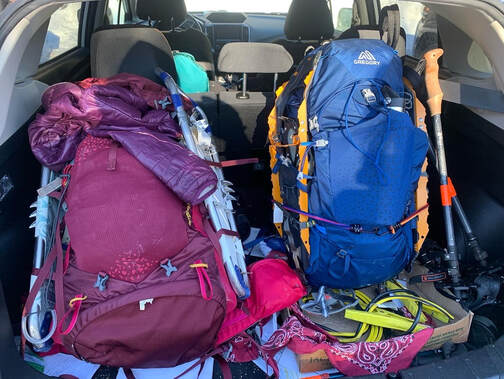 Two Gregory Packs in their full glory on the coldest hike of our year up Mount Liberty. You can see some of the extra straps for carrying snowshoes and other gear. Mine is the blue one. Al's is one size up. Two Gregory Packs in their full glory on the coldest hike of our year up Mount Liberty. You can see some of the extra straps for carrying snowshoes and other gear. Mine is the blue one. Al's is one size up. For the next year-end list I have five pieces of kit that I was super grateful for. Some of this stuff becomes a part of you on a long walk. Some of it may be or feel a bit more of a burden at times. Some of it never does. Anyway, here they are, in no particular order. Backpacks: OK... Maybe there is a bit of an order. You aren't going to get far without a good pack. I actually have four. One--a 40 liter Osprey--is really my travel bag but those straps are super-helpful for pushing through train stations and airports. Another is a 20 liter day pack from LL Bean that folds up super-small. Before my back injury, that was my go to day pack. Post-surgery, everything must have a frame now. I still make use of it. I just take it to the gym. With that out of the way, my current hiking kit includes the remaining two bags. I switch them out seasonally. That said, the seasons aren't even and there are times when I need to carry more stuff than a basic day pack can handle. Usually this means I defer to my "winter"--and most of spring and late fall--pack; the Gregory Zulu 40. A 40 liter pack isn't actually that large. It wouldn't get you much farther than an overnight, but--considering how I hike--this one has fit the bill for a couple years. You need a big pack when it starts to get cold. I found that this year, for example, I had to put my smaller bag away in mid-September. Over the course of our partnership, I have added some after-market straps and usually carry a couple bungee cords. There are always extras, like sandals, wet socks, or snowshoes that need to hang outside. The Gregory has a couple years on it. This year, however, I also got a summer pack for our hike across Scotland. We were staying in B&B's so there was no need for the extra camping capacity. Also--concerned about the longer days and what the weight would do to us--we planned to carry mostly water and one extra layer. For this purpose I used the Osprey Talon 22. At 22 liters it was close to half the capacity of the Gregory. It turned out I could carry quite a bit more than I thought, so I took advantage of the space. There is a partial list of my daily payload in the wrap up--linked in this paragraph--from that trip. However, it is still a slightly lighter frame pack that kept me honest about what to bring. It is best for either when hikes are in fair weather and close to resources or straight up during the summer months. 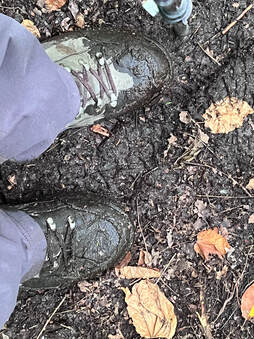 Wet day coming down the Horn...dry feet. Wet day coming down the Horn...dry feet. Boots: OK, this is a simple one. Boots are a personal decision based on the shape and size of individual feet. I used two pairs this year with mixed success. I made a mistake in my selection of boots for the Scotland hike. I thought something with a softer sole would help with the hard roads. It did...but the boot was less breathable which was a problem during Global Warming Summer. I would have been better off with something more durable or more breathable. I will not dwell on that. You can check out the post I linked in the last section. The good news is that my other pair are Lowas. I like them very much, though they did need inserts. They are all leather which somehow made them more breathable. Also, they kept me dry under some hideously damp circumstances. Once your feet are wet there is no happiness. I dread having to replace these boots as they have been downright perfect for my needs. Hopefully they are perfect next time as well. Boots are expensive... 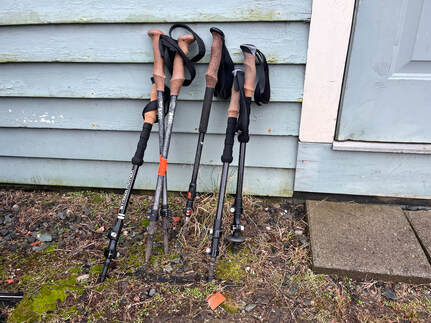 Here is an assortment of poles, mostly from REI or Hiker Hunger. There is a beat up one that journeyed on the AT with a thru-hiker but couldn't be taken on the plane. Note the cork handles--to keep your hands dry--and the basic looking clamps for adjusting height. Here is an assortment of poles, mostly from REI or Hiker Hunger. There is a beat up one that journeyed on the AT with a thru-hiker but couldn't be taken on the plane. Note the cork handles--to keep your hands dry--and the basic looking clamps for adjusting height. Hiking Poles: Here is a piece of equipment that I didn't expect to rely on as much as I did. Boy, do they make a difference! I was using these a bit even before my back injury. Now I rarely take a hike of any consequence without them. My suggestion is to always use two. That will help to balance you out. I use them both for ups and downs. Some do one or the other. Either way, they take pressure from your knees and make your arms work a bit harder. This is all to the good. Most hiking poles work just fine. Do yourself a favor, though and skip thinking about using ski poles. They are not the same! Hiking poles are adjustable and built for taking a ton of weight for a longer time. These days my go-to poles are from Hiker Hunger. I like the carbon fiber. This is partly just because they are a tad lighter, more durable, and take the shock a bit better. I broke a metal pole by landing on it. That also may have biased me. There are slight variations in design to think about if you want to. I prefer cork handles and a simple clamp for adjusting height. There are some which have sleeker looking mechanisms where you twist an invisible squeeze thing. They look sleeker, but the mechanics on the inside are impossible to repair and more likely to break. With most hiking equipment simplicity is a virtue. It should be possible to tighten the clamp at the joints with a phillips head (that you should bring with you if this is the case) or with your fingers (as on the Hiker Hunger models). If you zoom in on the picture above you will see what I am talking about. 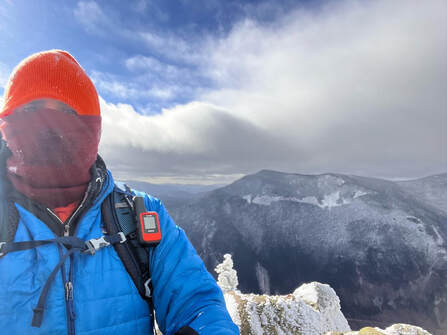 That orange thing that isn't a hat is the Garmin. Bringing that was the wisest thing I did on my solo hike up Jackson and Webster. That orange thing that isn't a hat is the Garmin. Bringing that was the wisest thing I did on my solo hike up Jackson and Webster. Garmin Mini: There isn't a ton to say here. this is a device that connects to a satellite to give you directions and communicate with the outside world. We rarely use it, preferring phone apps like AllTrails and actual physical maps that don't need charging. That said, the Garmin has an SOS function which could be a lifesaver if you get stranded in a spot where your phone doesn't work. Some hikes have few to know dead spots. Others--like those in Baxter State Park--rarely have cell coverage. The Garmin gives us piece of mind that we don't have to use. Al and I have one that we share, because...it is pricey. 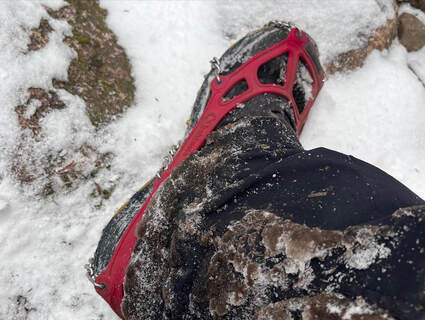 OK...this was pretty wise, too. These are my Kahtoolas on Jackson and Webster. OK...this was pretty wise, too. These are my Kahtoolas on Jackson and Webster. Micro-Spikes: On the hiking socials there are a lot of arguments about which kind to use. Basically, though, they are chains and pointy things with elastic frames that fit over your boots. This time of year they are super-important to have in your bag. We always carry micro-spikes starting in November if we are expecting to climb. For how we hike, they are even more important than snowshoes (also necessary in some situations). Ice can really mess a person up. There are really only two brands that you want to find yourself depending on. They are made either by Kahtoola or by Hillsound. Do NOT try to save money here if you can help it. There are cheaper brands but I, at least, worry about getting stuck somewhere sketchy with nothing more than a pile of broken elastics. For winter hiking one might also want crampons (big spikes) or an ice-ax. Al and I use micro-spikes and just assume we aren't doing hikes that require more than that. We do like to know our limits! Maybe someday we will trade up. That Jackson hike was an eye-opener. It was the first time I missed having an ax. I have also found micro-spikes helpful on shorter trips where there is little ice but quite a bit of packed down snow. That extra traction keeps one from slipping back and wasting energy. Well that is all for now! Obviously there is a lot of other gear one could bring up here. these are just my favorites. Honorable mentions can be given to my trekking towel, the oft-used water purification tablets, snacks, and snowshoes. Maybe I will get to those later, but these are the big ones or 2022... 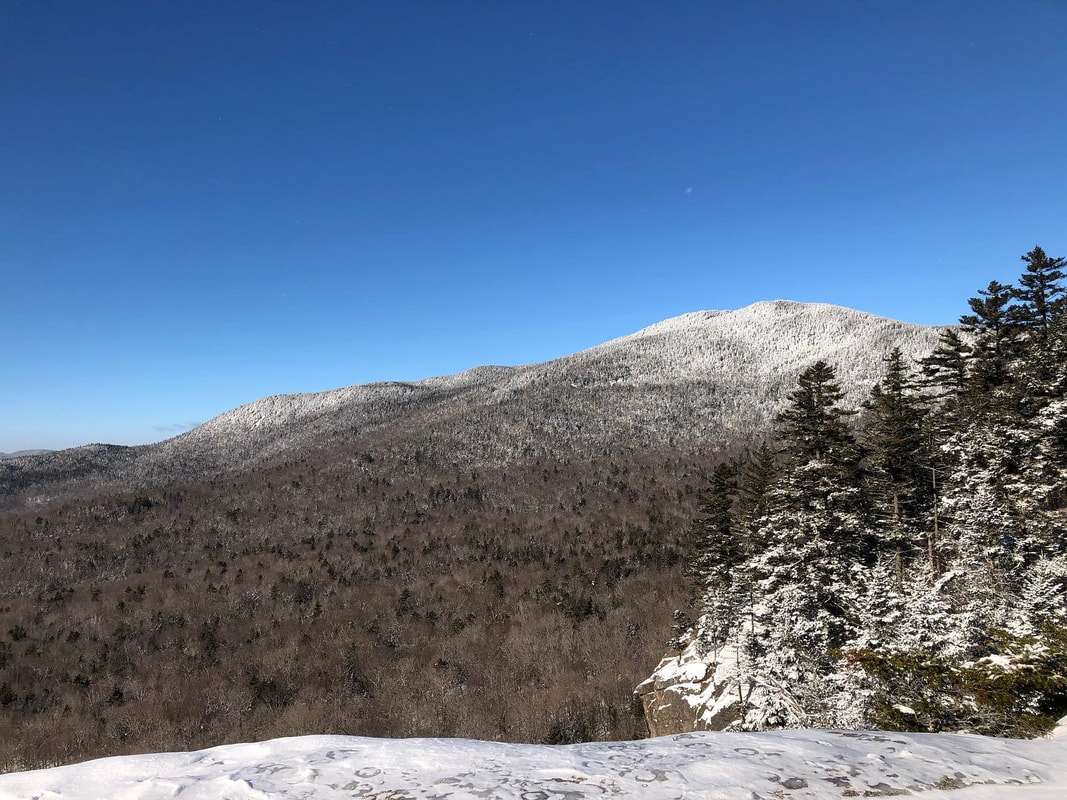 The view off Pemigewasset The view off Pemigewasset The late days of Christmas, right? I hope you are all making it work. The Advent season--frequently referred to colloquially as "Christmastime"-- is peak work for people in my trade. Now it is over. In fact, now it is actual Christmastime and things are slowing down. Theologically in terms of December, Advent is the regular season. The twelve days of Christmas are the playoffs. However, thanks to the cultural tendency toward immediate gratification, the secular world comes screaming out of the gate on December first. The playoffs in this tortured metaphor are more peaceful. I am enjoying that. We visited family and right now we are waiting for a few friends to come over. That is about what we are up for. It is enough. In my last post I wrote about how important it is to keep busy this time of year. The dark of winter can turn into a personal darkness pretty darn quick. To stave that off I am planning my spring garden and making year end lists. You have one about my most-used hiking books of the year. Here is my next one. First, let me pull back the curtain on Sabbath Walks a bit. When I am planning hikes I like to take the usual things into account--time, weather, challenge, views and so on--but I also try to consider what the experience of that particular part of the natural world might be trying to say. What can I learn? What kind of questions am I asking? I try to engage with nature mindfully, though it doesn’t always work. Part of that preparation is religious and ritual-based. However, part of it is through study. This list is a product of the study part. I read a lot of books. These are the ones that have spoken to me the most this year...at least on the theme of nature. The first thing I noticed when putting the list together is...it is not a terribly diverse list! I could have curated it a bit and slipped something in, but I am trying to be honest. All I can say is that I see it. I have a number of books in the pipeline for this year that are more varied. These ones are a product of my background and education. I went back to what I know, apparently, which is fine to start but...one can't stay there... Thoreau and Thaxter are old theological and literary companions. I have read and re-read them for years. Burroughs is a new find but from the same era and with similar concerns and interests. Thomas Starr King is a figure from my church and denominational history, but here he is speaking to me as a clergy person who hikes. The one modern is the Scottish poet Hamish MacDonald. Even, he, though, is reaching back to the 19th Century and the work of naturalist Alexander Wilson. Apparently the era speaks to me. Perhaps in the new year I will learn to listen to other voices...or at least that is the plan. Anyway, here they are. They are sort of listed in order but...not really. They are all pretty good. 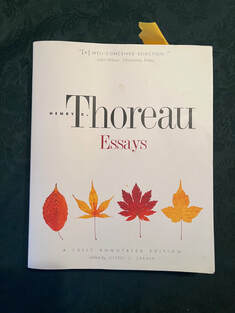 Essays by Henry David Thoreau, Jeffery Cramer ed. Thoreau, of course, is best known for "Walden" and "Civil Disobedience." My favorite of his, however, is "Walking". In this and other works--divorced from the wishful projections of back-to-basics folks whom I also admire--Thoreau reveals himself to be both modern and a keen observer of the natural world. In addition to the above essays, I found "Winter Walking" and "A Walk to Wachusett" to be particularly moving. I like all of them, however. I used this particular collection to teach Transcendentalism to high school aged "unschoolers". Unschooling is a form of self-directed learning that is frequently lumped in with "homeschooling" for legal reasons. The thing to remember is that the scholars have tremendous control of their time. That they read these essays is quite an endorsement! They also found it to be relatively accessible. A big part of it's popularity comes from Cramer's annotations. If you want the full context of the writing, I would encourage you to get this edition and take copious margin notes.  Shiny picture but you get the idea. Shiny picture but you get the idea. An Island Garden by Celia Thaxter Thaxter is an oft-overlooked second generation transcendentalist. An accomplished writer/poet/innkeeper/salonist/gardener, she influenced a large number of artists and thinkers who would visit her inn on Appledore Island, one of the Isles of Shoals in New Hampshire and Maine. That is a pretty rough piece of real estate! Her garden essays are riveting reading if you are interested in how to get the most of your agricultural endeavors in a hostile environment. Her own philosophical inclinations pervade her writing in an engaging way. Her practice of close observation served her well on the tiny islands that help define her work. I have found her essential to understanding how to be mindful when your landscape is circumscribed. 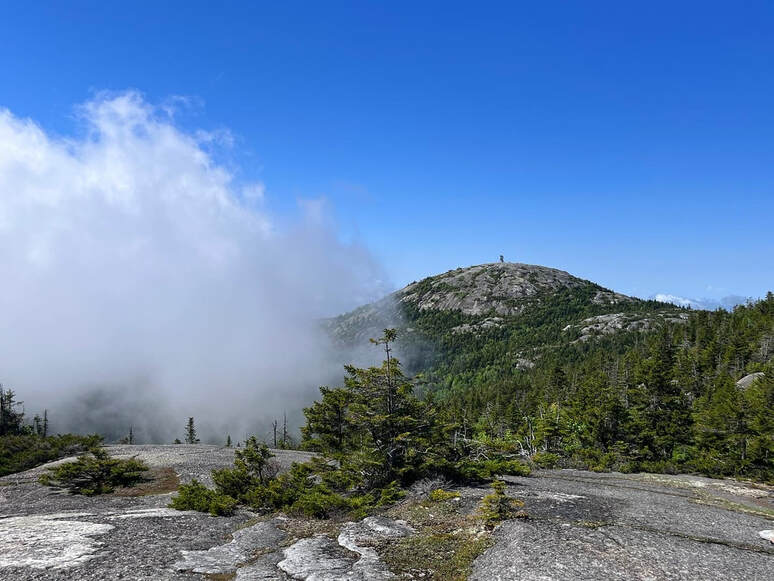 A view of Cardigan from Firescrew, both of which are prettier than a peek at my ipad. A view of Cardigan from Firescrew, both of which are prettier than a peek at my ipad. The White Hills: Their Legends, Landscape, and Poetry by Thomas Starr King I got this for free on googleplay so there isn't a picture of the cover. Free is nice, though, right? Starr King was a Universalist minister who served both Universalist and Unitarian churches. He is more famous for being a Californian, but his life started in the east. At some point he wrote an early book about hiking the White Mountains. Now a 52 WAV mountain is named after him. He has been a good companion in my explorations in that neck of the woods. I do not think he is quite as engaging as Thaxter but he, too, observes the small changes. His gift is universalizing some of his observations. I found his description of the perpetual change of light and color in the mountains to be particularly engaging. It is a topic I examine more in my post about Mount Hedgehog. 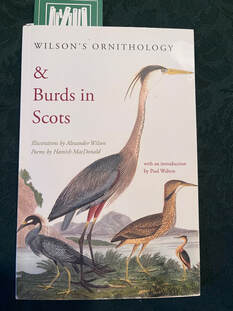 Wilson's Ornithology & Burds in Scots by Hamish MacDonald (Illustrations by Alexander Wilson) I picked up this small volume of poetry in Fort William, Scotland. I was looking for something light to carry daily during our hike of the Great Glen Way. MacDonald's work is set in dialogue with that of Alexander Wilson, a Scottish ornithologist, poet, illustrator and naturalist who is sometimes described as the "Father of American Ornithology". The illustrations in this book are by Wilson. MacDonald's poems are–as the title implies–in Scots so they take a little work, but they fit the bill during the hike and I have found myself going back to them since. 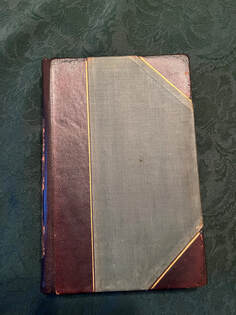 Leaf and Tendril by John Burroughs What is this? Another 19th Century naturalist? Well...yeah. Somehow I got this book. I am not sure how. It is the 13th volume of Burrough's collected works. Burroughs is frequently overlooked. Apparently he sounds like Emerson. Not sure why that is a problem. Anyway, Burroughs is another observer of nature. He wrote most of the essays in this particular collection while sitting in a writing-cabin in the middle of his vineyard. The first essay "The Art of Seeing Things” was particularly helpful as I tried to move from concentrating on achieving the destination--usually the end of some painfully uphill slog--to focussing on the journey and the character of the plants and animals around me. I commenced the second day of Christmas by discovering the Latin and colloquial names of my houseplants. Then I made coffee. Then I went for a walk. On my walk I started to make a plan for surviving the next two months. As you may have gathered from my previous post, I am not at my best in winter. I must find ways to move from one thing to another, to another... There is no reason to delve too deeply into all that again. It is just a fact of life that requires a certain amount of organization. Organization, however, is something I am very bad at. So I have some time between now and Epiphany to figure out an approach. No doubt it will involve being out in nature. There will be hikes, of course. Also, my Christmas gift to myself was a stack of gardening books so I can solidify my gains from last year. I have a tab open with tomato seeds! For part of the season I will be working at a job I usually enjoy. Then--for a little while at the end when I am most despairing--I will be on sabbatical. So much of this time can feel restrictive. Hibernation-brain is right there picking away at our resolve. The trick is not to keep busy for busy-sake but to find ways to be excited about...something, even though it might take a herculean effort to get going. One of the the things I will try to do is make some "top" lists for the new year that I can share with you. It is actually a big help for me and, maybe, you will enjoy it too. The ranking lists for blog posts and such is canonically around "Mount Roberts Day" when I began this project. These ones are more specific to the background of the project. To start, here are the six (6) most influential books I used this year for planning hikes and walks or planning for planning...if that makes sense. Some are trail guides. Some are practical, and one is historical. They have all been consulted before, after, and during hikes. Some of them are quite beaten up now as they have lived for a time in my backpack. I will hopefully deal with more speculative books and maybe even equipment in later lists.... 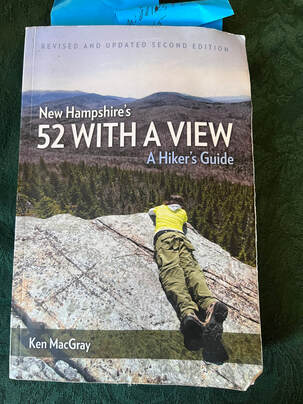 1) New Hampshire's 52 With A View: A Hiker's Guide by Ken MacGray. Ok so I have talked about the New Hampshire and New England "Hiking Lists". They exist elsewhere of course, but I don't so these are the ones I know best. My favorite list is the "52WAV". They range from relatively easy--you do have to be in shape--to rather brutal. Each one, though, comes with a view. The list is subjective. It is curated by a committee and so far their taste in views has been spot on. Ken MacGray is a bit of an insitution. He has worked on a number of other hiking books and runs the Facebook page for the 52 group. His prose is accessible and clear while also being entertaining. Even though I have climbed more 4,000 footers in New Hampshire--the 52's are a bit of a me project right now and I like to hike with people--this is my favorite book and my favorite list. Five stars, buy it. Start with Willard. 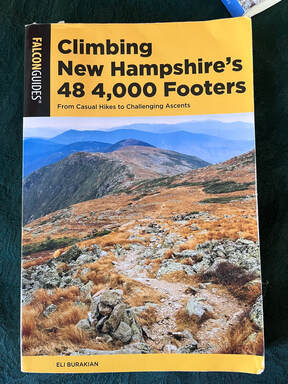 2) Climbing New Hampshire's 48 4,000 Footers by Eli Burakian. Actually there are more that 48 4,000 foot mountains in New Hampshire so--while the 48'ers like to pretend at objectivity--this list is subjective, too. This is the basic book for the task of hiking all those mountains. It contains suggested routes and maps. Maps are a plus, by the way. MacGray's book assumes you have separate maps on you--and you should--but it is nice to have these as well. I have used the routes in the book when planning. Most of the time I have taken the exact route. At other times I have modified my route using another book--in the honorable mentions--and/or those maps. The text is brief and to the point, which I like. 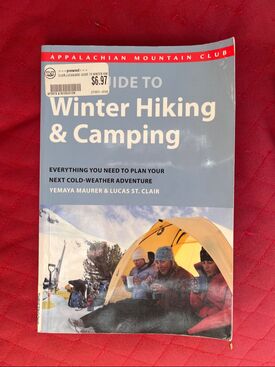 3) Appalachian Mountain Club Guide to Winter Hiking by Yemaya Maurer and Lucas St. Clair. I am in the process of re-reading this book right now. There is a great deal of difference between hiking in winter and hiking the rest of the year. It is imperative that we know at least the basics of what we are doing. I do not camp in winter, but those sections are good to be familiar with as well just in case you find yourself having to be out overnight. The presence of roads into the wilderness sometimes confuses us as to how at risk we are. Just because we can reach the foot of Presidentials in a couple hours does not mean we are strolling on the local rail trail. This book covers the basics that one needs to know to be relatively safe and comfortable in the ice, snow, and dangerously low temperatures. There is some practical philosophy as well. I found the description and use of equipment, tips on reading the weather, and the basics of layering to be the most useful. The authors make you feel like you are part of a team, namely a team of prepared and educated winter hikers. 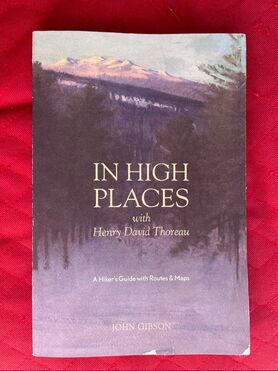 4) In High Places with Henry David Thoreau by John Gibson This is the history book I was telling you about. It also has routes and maps! I am a big fan of Thoreau's writing--he will appear on a different list--and when I have managed to walk in his footsteps I have found this book to be indispensable. However, this is not a general book. The mountains picked are rather niche, thanks to the subject matter. Thoreau--who walked a great deal--needed to have spent some time writing about them in order for them to be included here. However, my readers will note the Thoreau-heavy blog posts for Katahdin, Washington, and Wachusett. I gotta get back out to Greylock, and when I do...this book is coming with me. 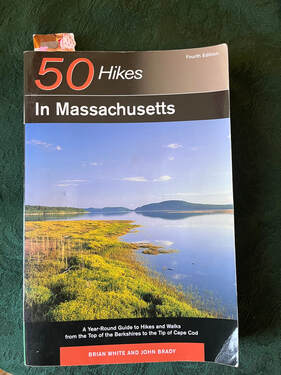 5) 50 Hikes in Massachusetts by Brian White and John Brady Yes, there are hikes right here in the Commonwealth. When I feel like heading out but do not know where to go exactly, this is the book I take. I used it as recently as Thursday when I went to Leominster State Forest. Pretty much any hike in Massachusetts I have taken has been planned using this. It has maps but I often diverge a bit. This has nothing to do with their quality! It has more to do with my confidence with lower elevation hiking. I do, however, plan those alternate routes in advance as well...and I have detailed maps. Spontaneity isn't always a good idea in the wild. Another great thing about this book is that it has many easier hikes. This, alone makes it worth having. Hiking doesn't have to be a toxic race to the highest, most dangerous peak. That is not very sabbath, after all... 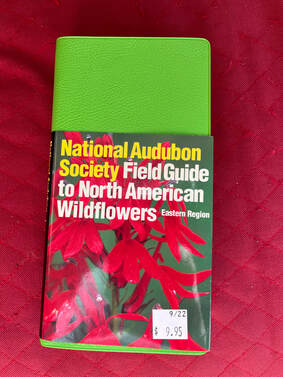 6) Field Guide to North American Wildflowers: Eastern Region by the National Audubon Society I picked this up out of envy. My brother Dan--who features largely in many of my posts--is a wildlife biologist. Hiking with him is a hobbit-like excursion where I follow him around as he identifies birds by their song, animals by their poop, and plants by their leaves, needles, bark, and roots. I wanted to get in to the game myself. What a great way to enhance one's dialogue with nature! Anyway, I love this book. It takes a while to figure it out because it relies on the reader knowing at least the basics off what they are looking at. That said, I have enjoyed it during my sabbath breaks on smaller mountains. If you know anything from my various posts, sermons, and so on, you know that it is that it is OK to enjoy something you aren't good at. Also, I think it is helping me get better.... 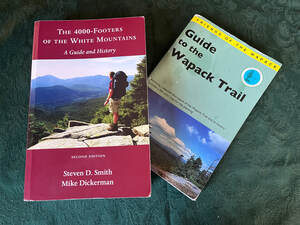 Honorable Mentions: Here are two more that are deserving of note. The first is The 4,000 Footers of the White Mountains: A Guide and History by Steven Smith and Mike Dickerman. This thing is the Bible of the 48'ers. My wife swears by it. When I go off the suggested trail in the Burakian book, I always consult this. It only gets an honorable mention because I don't seem to use it as much. It is dense. There are no helpful maps. However, it has one big advantage that the other book does not; there is a winter description for each mountain. Had I consulted it before hiking Mount Jackson, I might have been more prepared for the icy ledge and the high winds that greeted me. Finally, I wanted to mention the thin book entitled "Guide to the Wapack Trail" by the Friends of the Wapack. I have mentioned this trail before. It begins on Mount Watatic and runs to the Pack Monadnocks straight through some of my favorite landscape in the world. It is a long day hike--21 miles--or can be done in pieces. I would love to take a day and do it this year... Anyway, that is all for now. You got me through my morning! I hope your Christmas is going well... :-) |
Adam Tierney-EliotI am a full-time pastor in a small, progressive church in Massachusetts. This blog is about the non-church things I do to find spiritual sustenance. Archives
June 2024
Categories
All
|
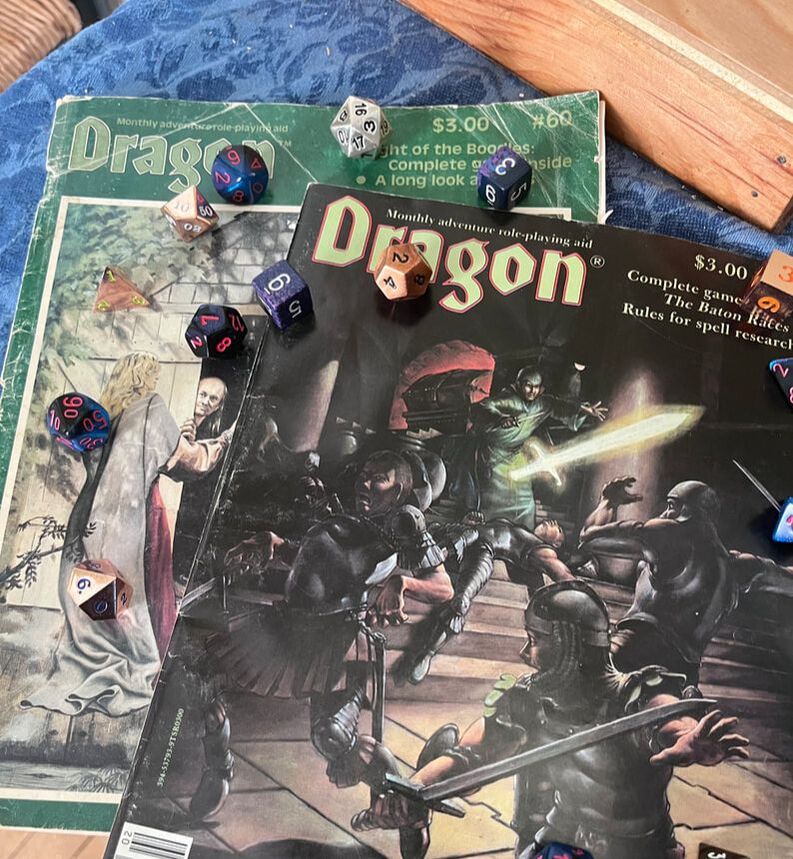
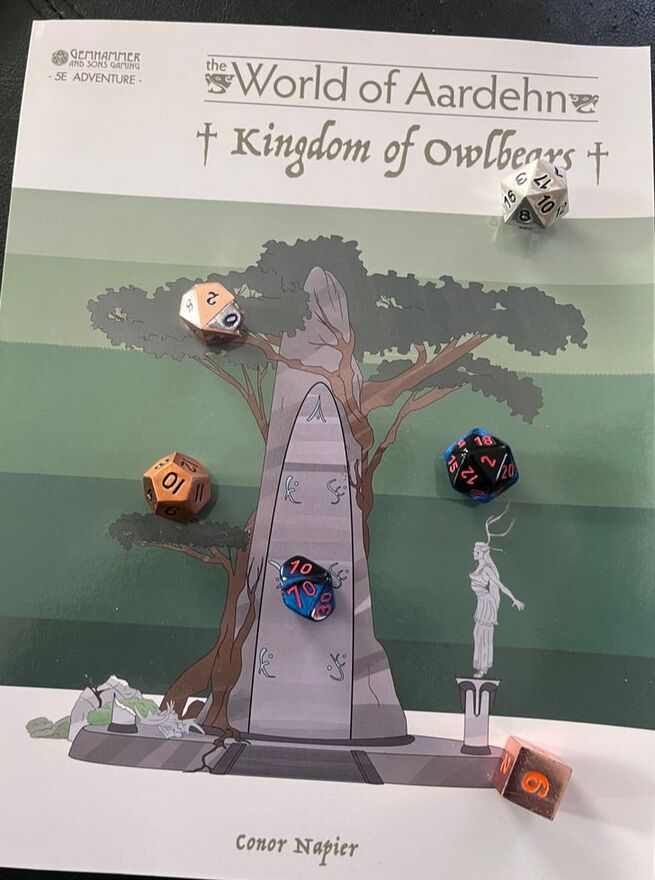
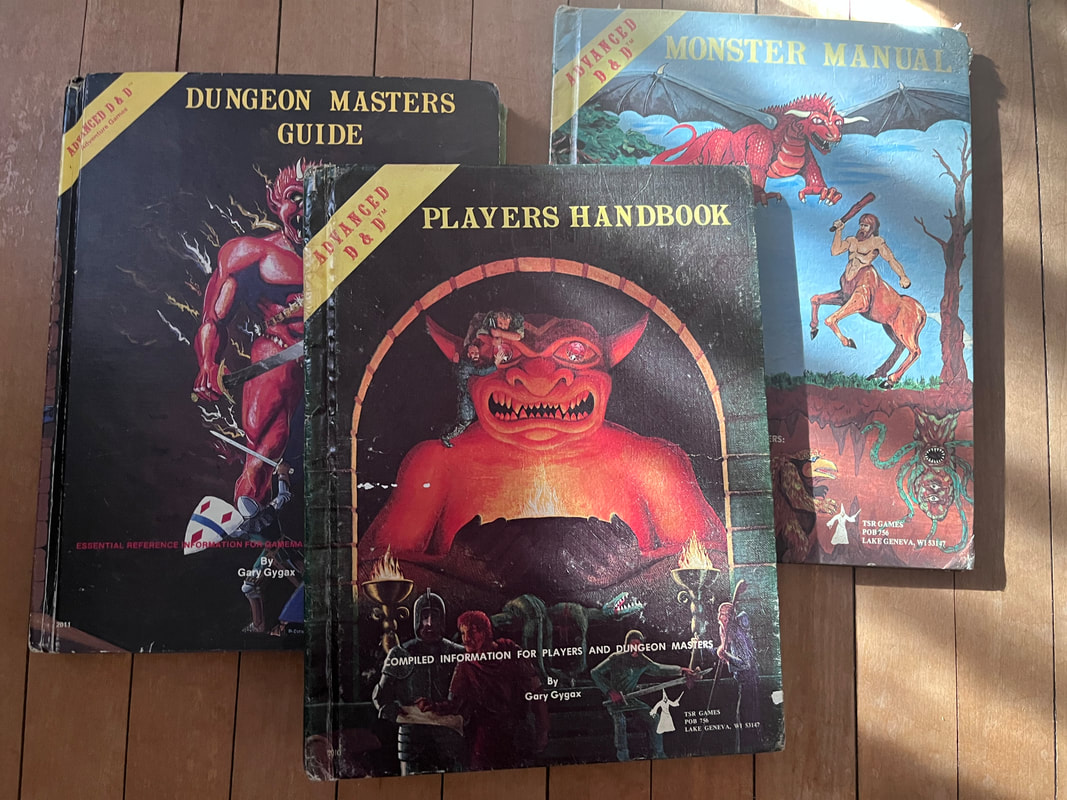
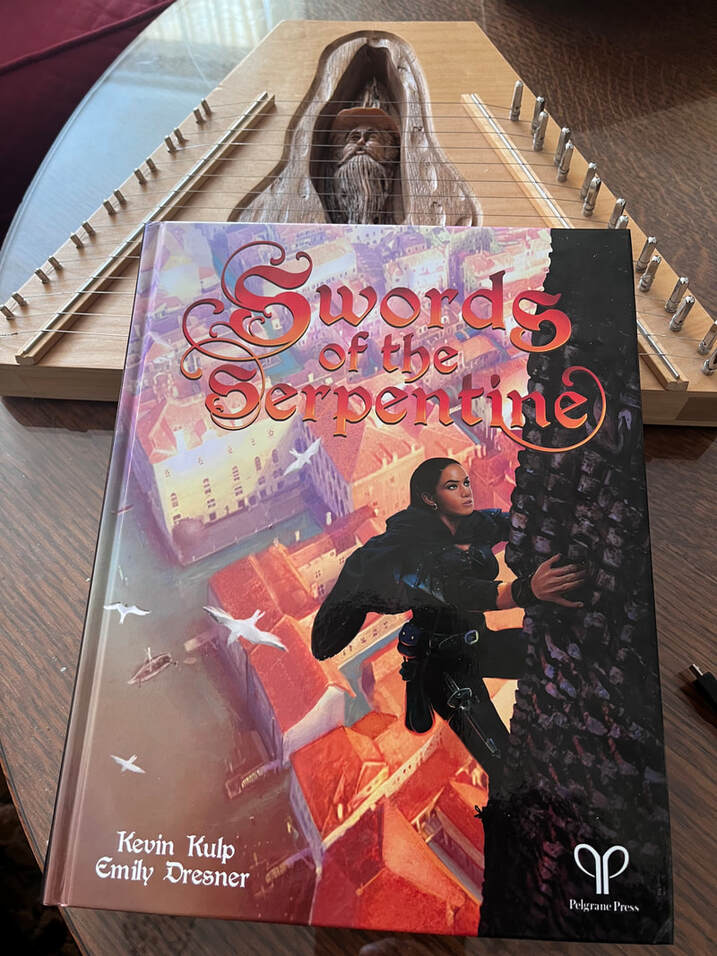
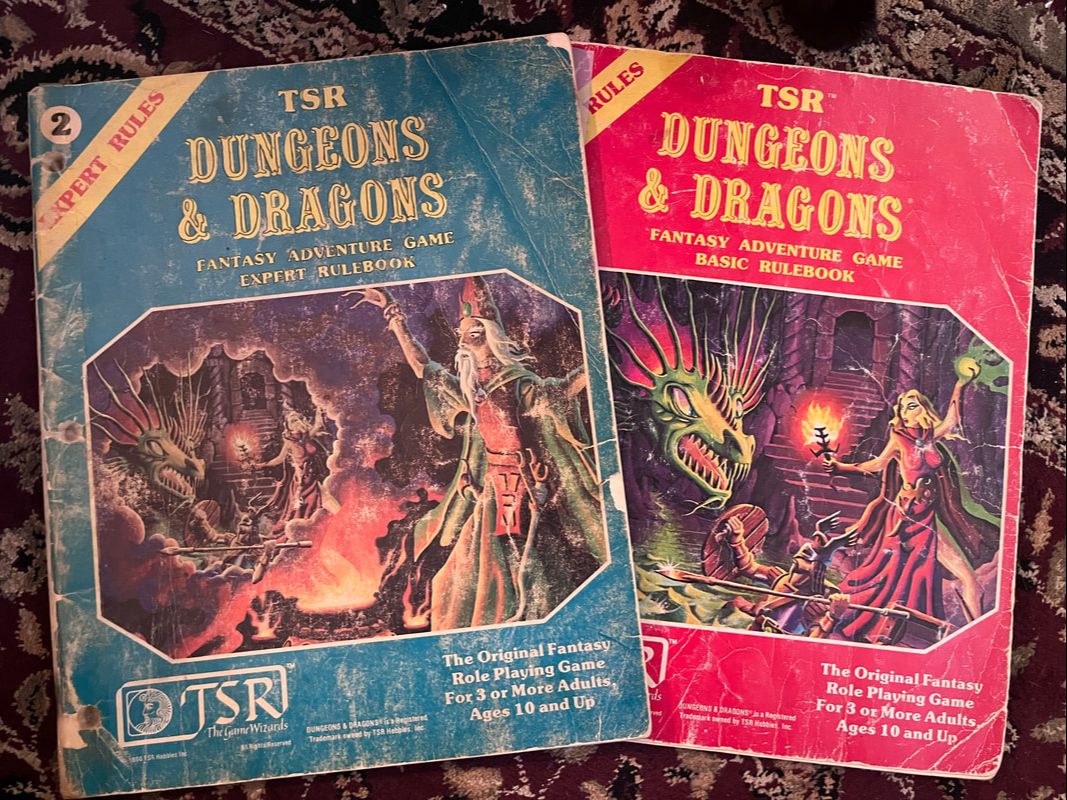
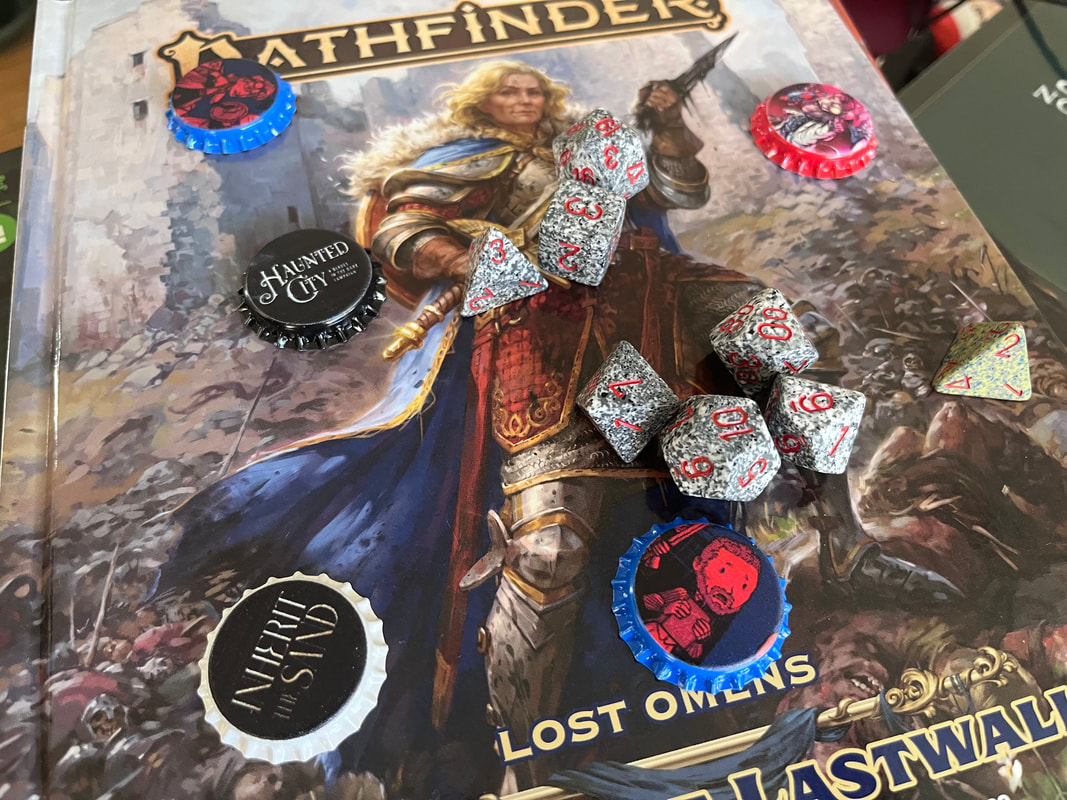
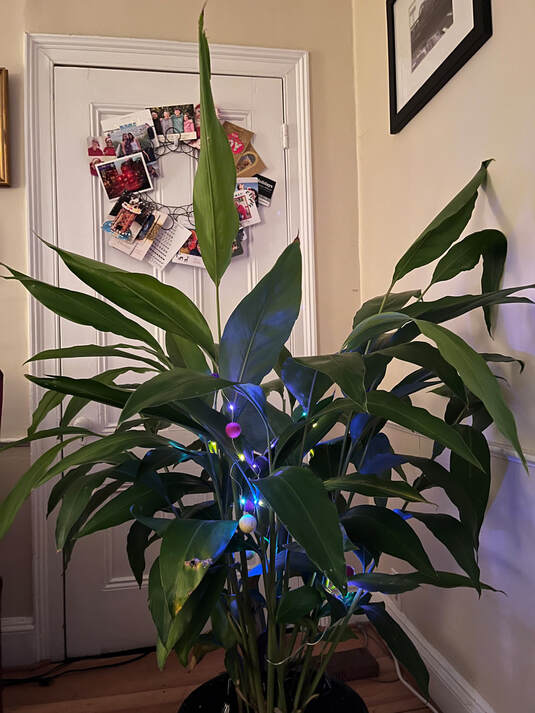
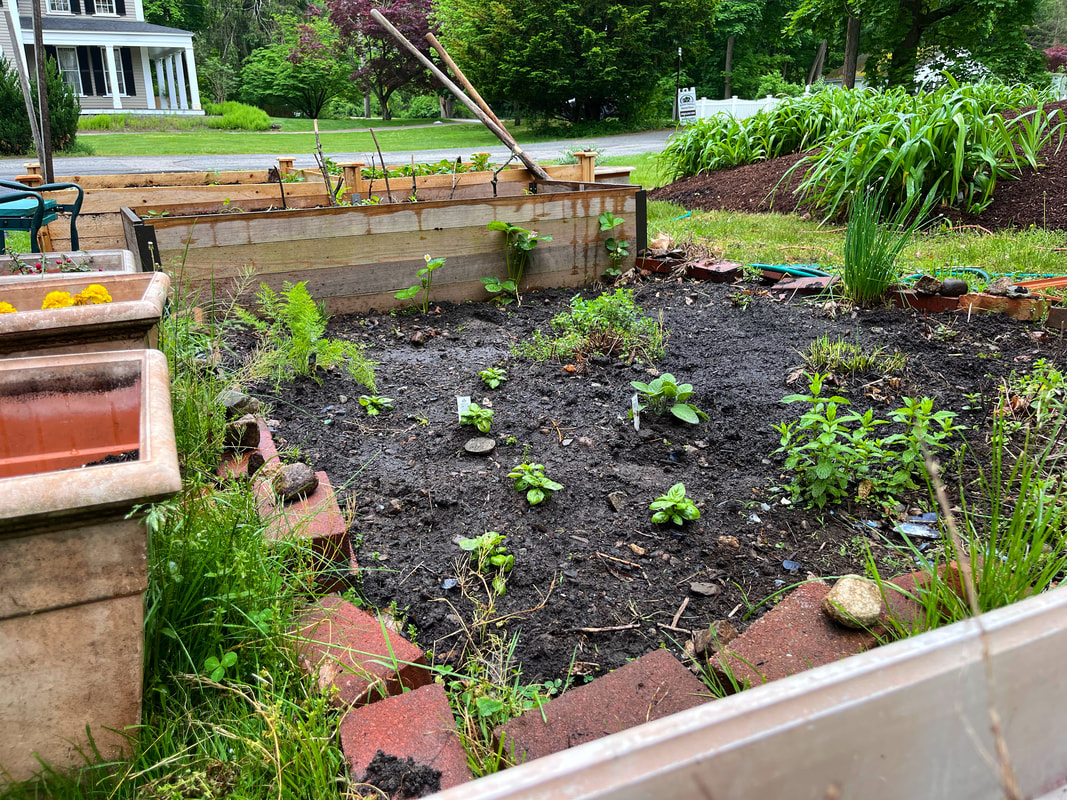

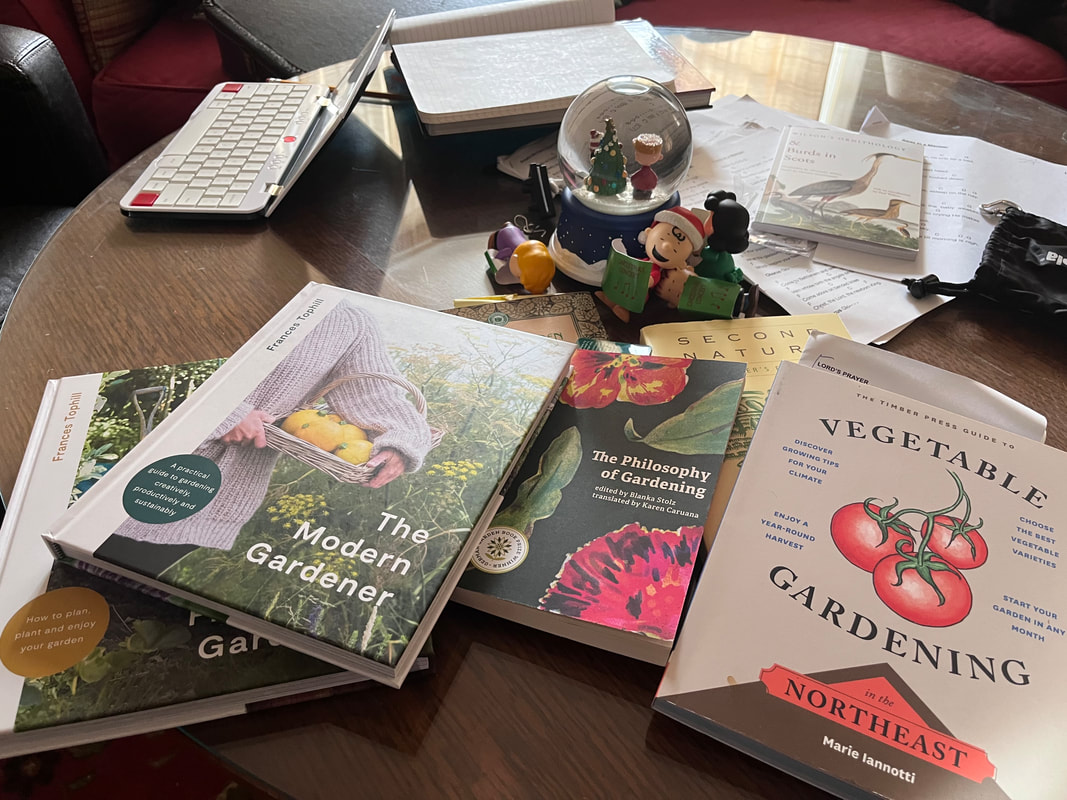
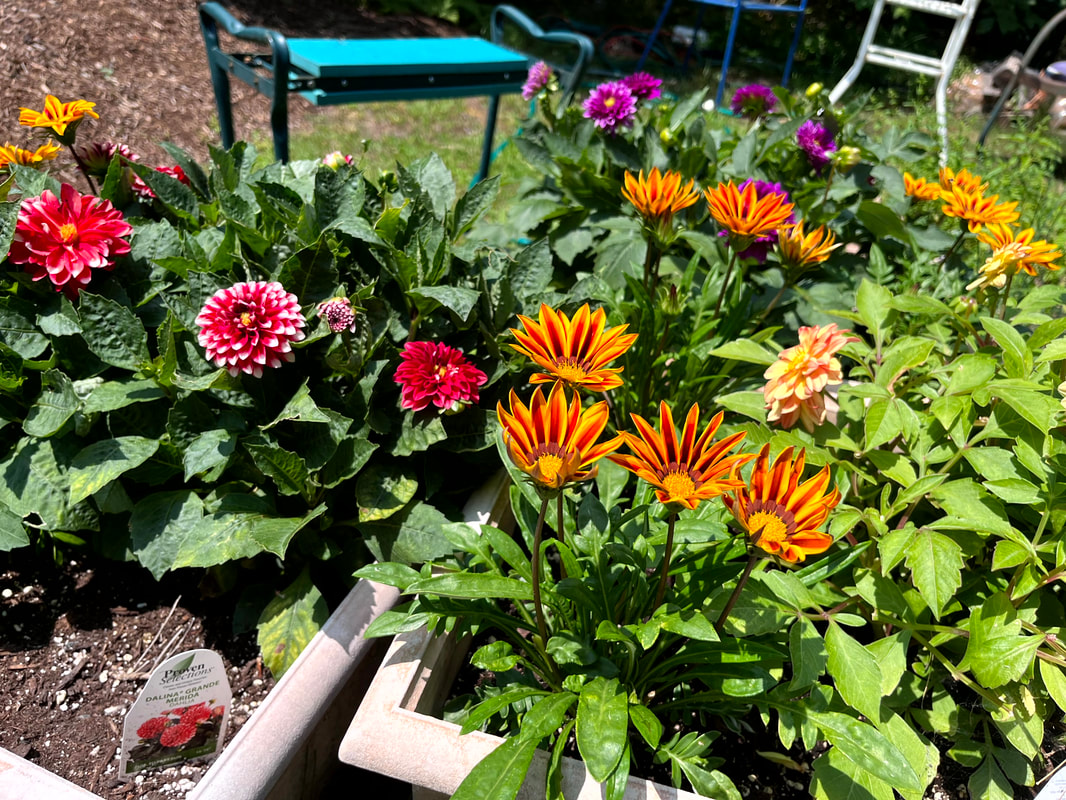
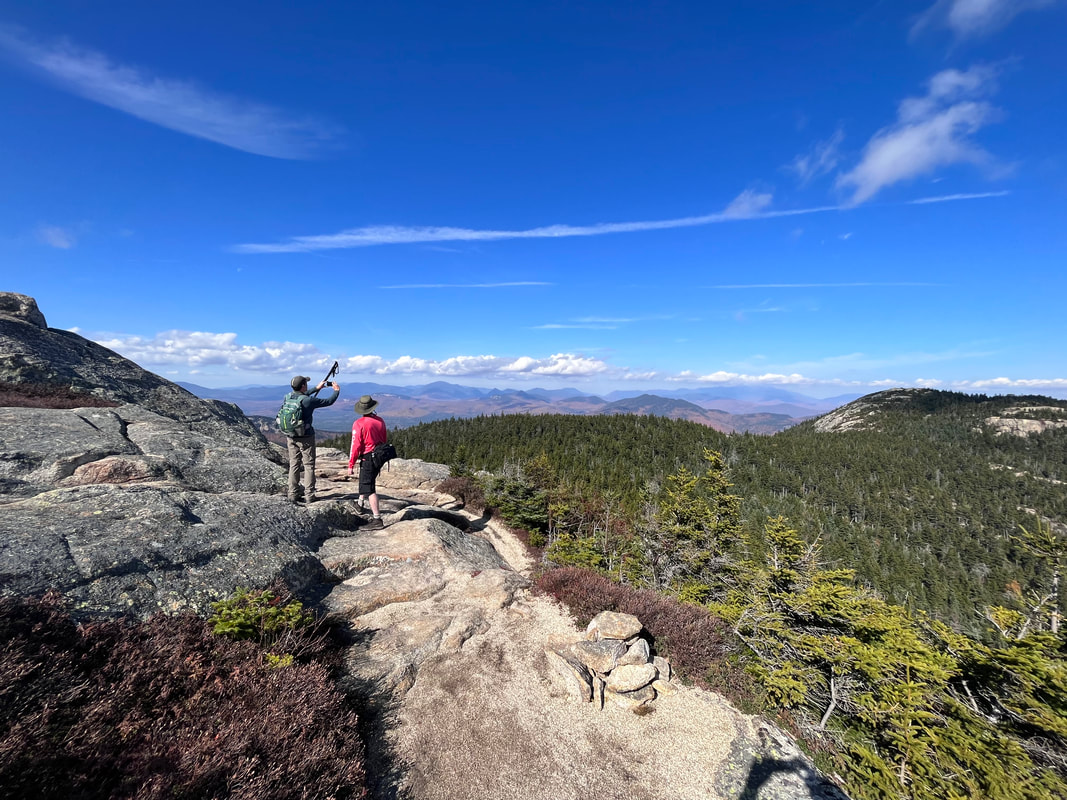

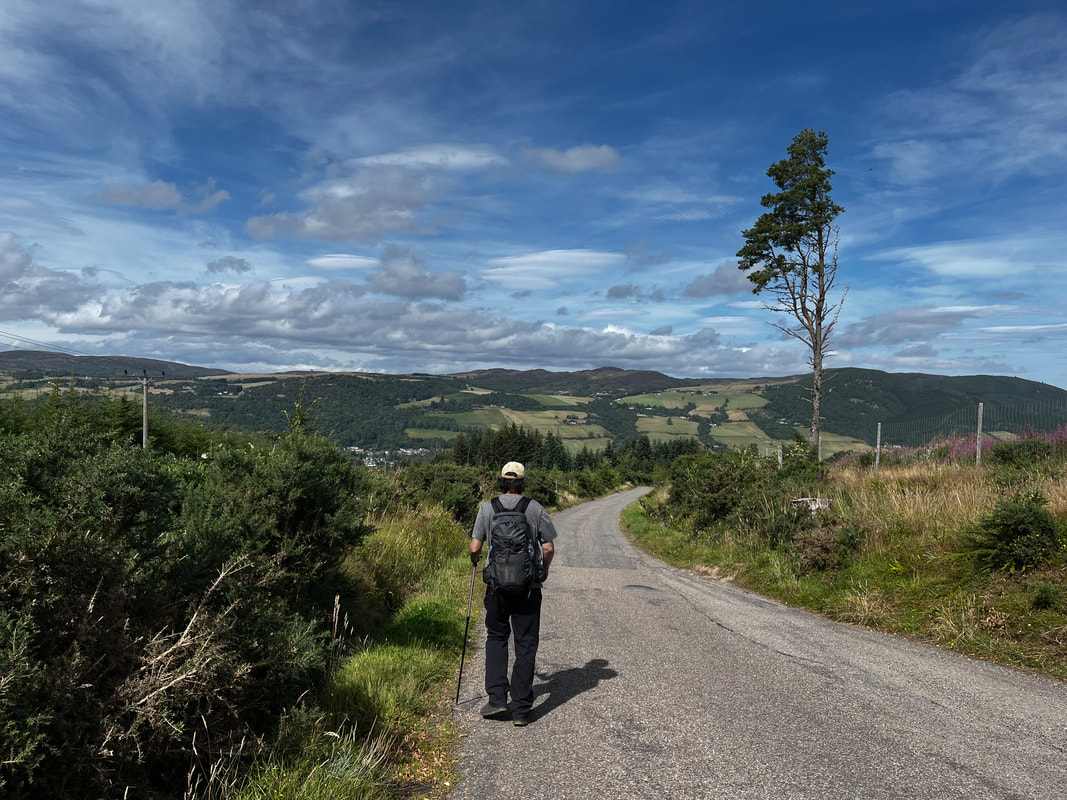
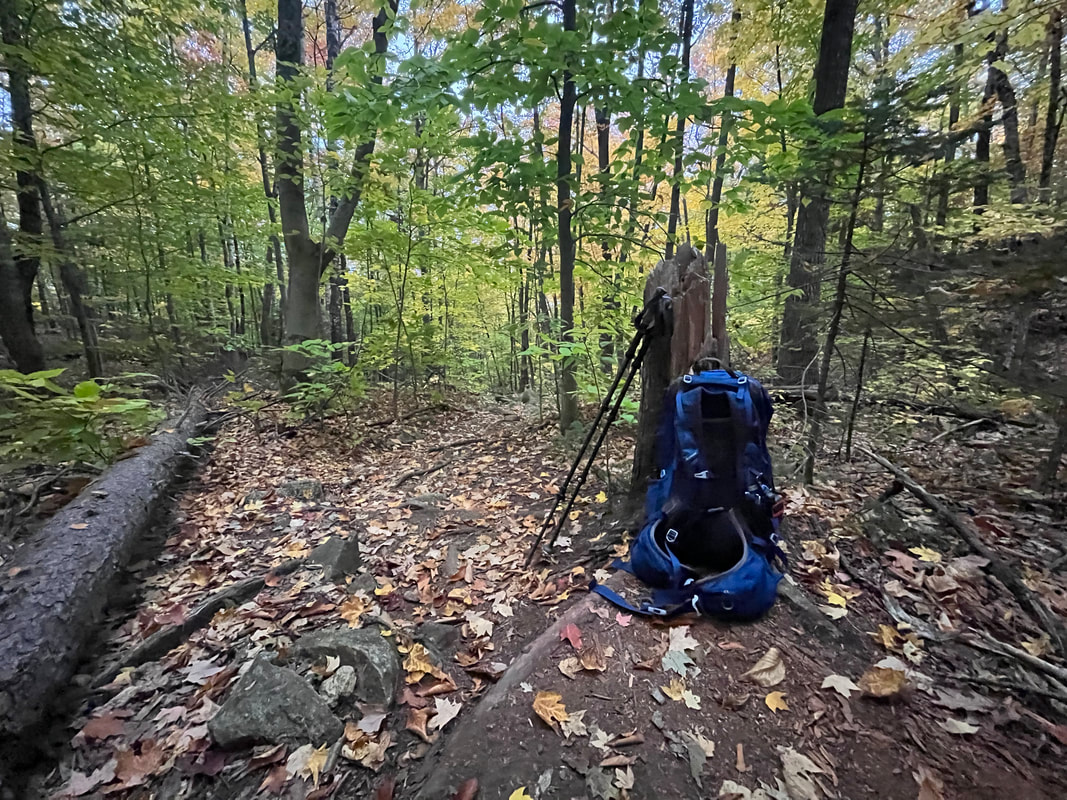
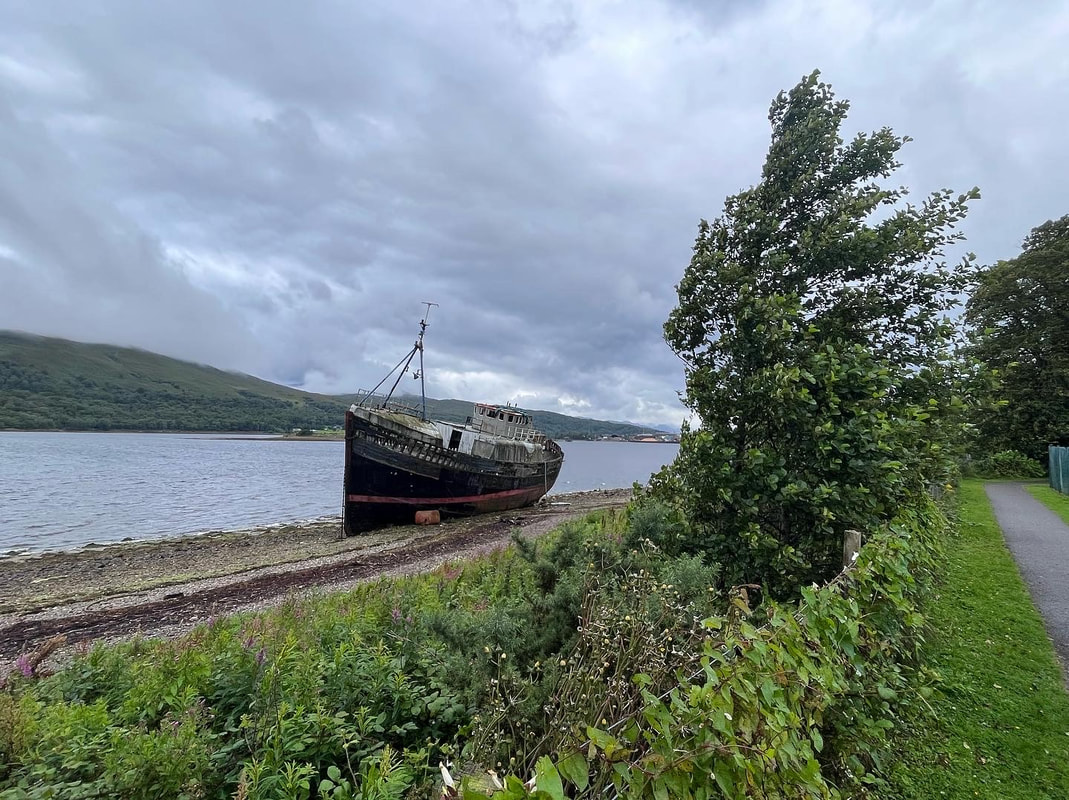
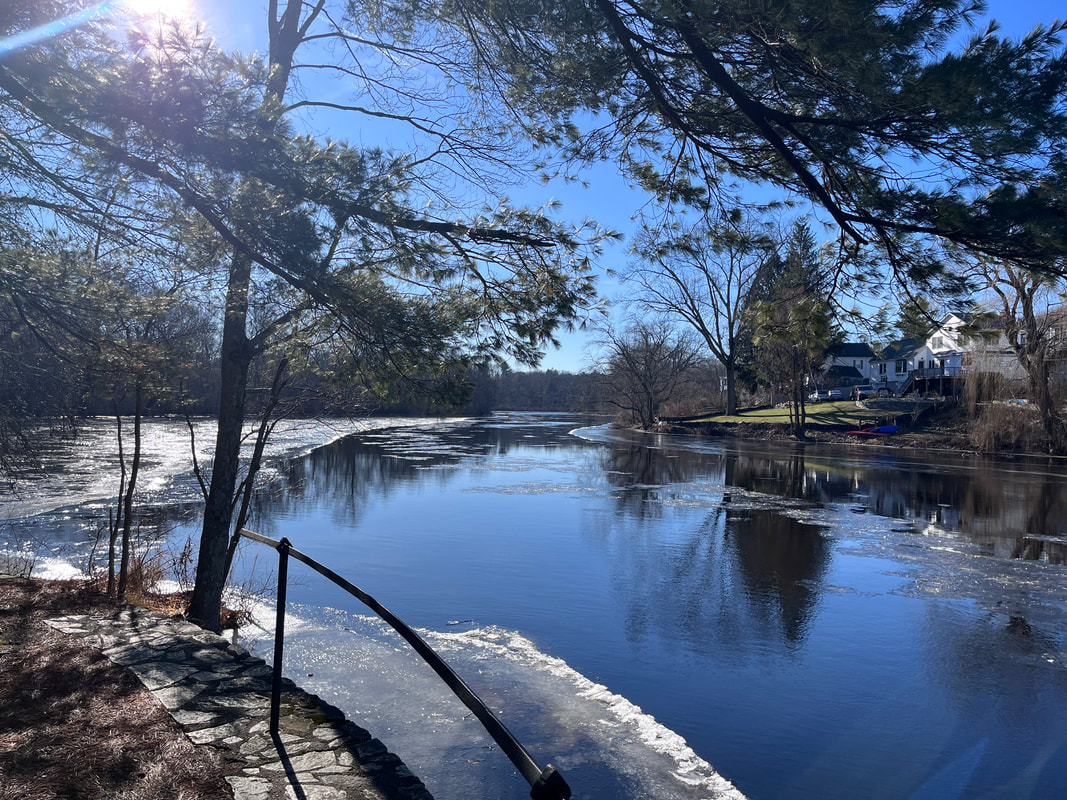
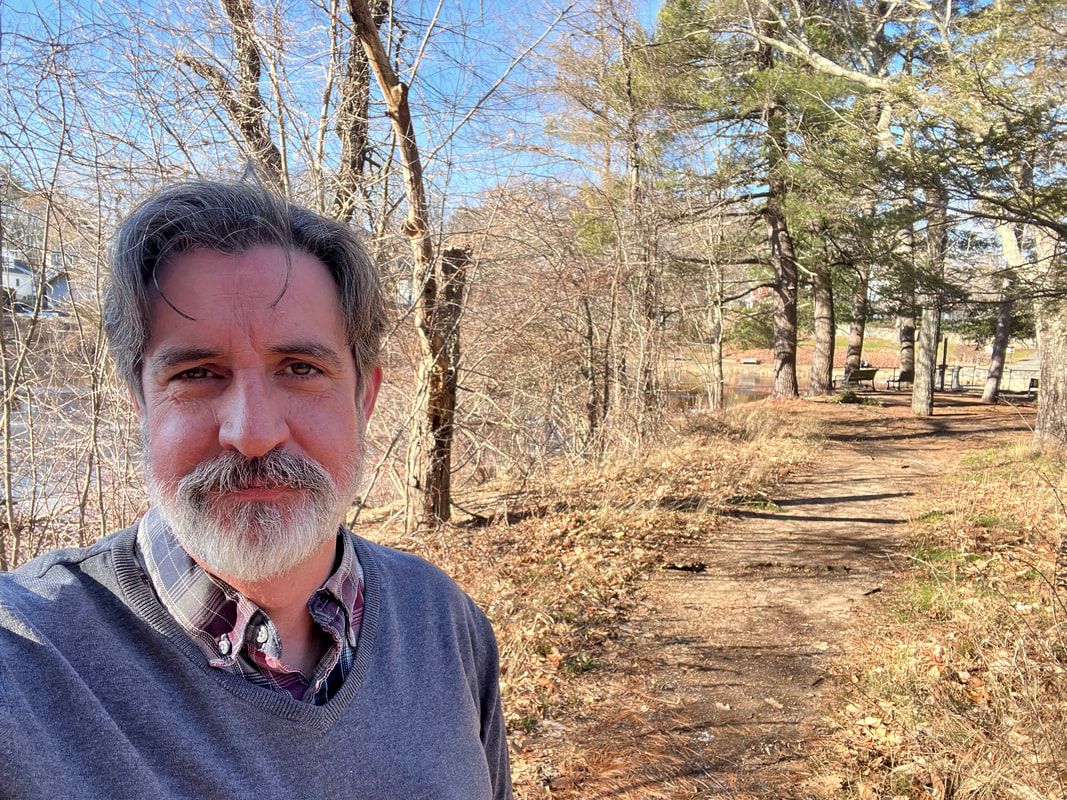
 RSS Feed
RSS Feed